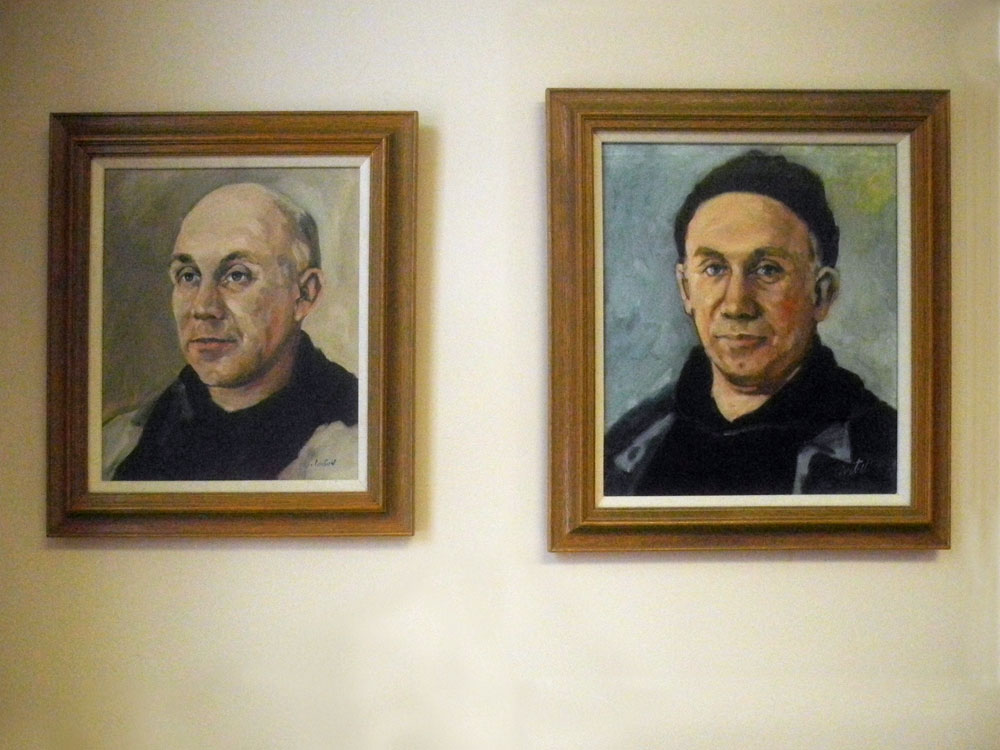
In England and Wales the feast of Saint Peter and Saint Paul is observed as a holy day of obligation (i.e. you must go to mass). Peter, fisherman, friend and disciple of Jesus, and Paul, a Jewish pharisee and later a self-appointed apostle of Jesus were both martyred and have churches named after them in every major city in the country.
Peter (Monicelli) and Paul (Dodd), local voluntary Catholic exiles, drove out to Nazareth College yesterday to visit the Thomas Merton library (Peter’s agenda) and photograph the stations of the cross in the school chapel (Paul’s agenda). We started with the stations because I was driving. Pete found the lights in back room of the empty chapel and I was able to photograph the fourteen stops. By coincidence, I first spotted the classic, sculpted stations at Father William Shannon’s memorial service last year. Bill, as my parents called him, was a close family friend as well as the leading authority on the writer, mystic, artist, Trappist monk, poet and social activist, Thomas Merton.
Pete Monacelli was in heaven in the Merton Library. Pete is a self described “abstract illustrator” but that sells himself short. He is an artist, a seriously productive and successful artist, as well a great guy with a huge heart. He is very interested in the connection between Merton and the early abstract expressionists. Merton was on the same search as his New York contemporaries when he converted to Catholicism and joined a monastery. Pete showed me many series of works he has done based on Merton’s works, beautiful drawings and paintings and assemblages. He wanted me to pick one to take home and he let me borrow Volume 1 of Merton’s journals. There are seven but he insisted I start with one.
We had lunch at Rocky’s on Jay Street. Pete eats here at least twice a week and can get away with ordering rigatoni as “rig” and calling the waitress “sweetie.” Pete is my favorite drummer in town. He had Rob Storms at Sound Source rig his turntable to run at 16. He says all the guys in his day used to learn guitar parts by slowing the song down, dropping the tune an octave. After lunch we listened to Miles Davis’ version of “Guinevere” and “Pharaoh’s Dance” from “Bitches Brew” on 16RPM. They are both long songs and were twice as long this way but beautiful. You quickly forget that you have changed gears while you hear parts dramatically unfold. He told me with all certainty, the way Pete says most things, that this is what Margaret Explosion sounds like.
1 Comment
I remember turntables having a setting for 16 but never could figure out what kind of recordings that was used for.
There is software out there that slows things down without changing the pitch. I’ve heard some cool stuff on Youtube.